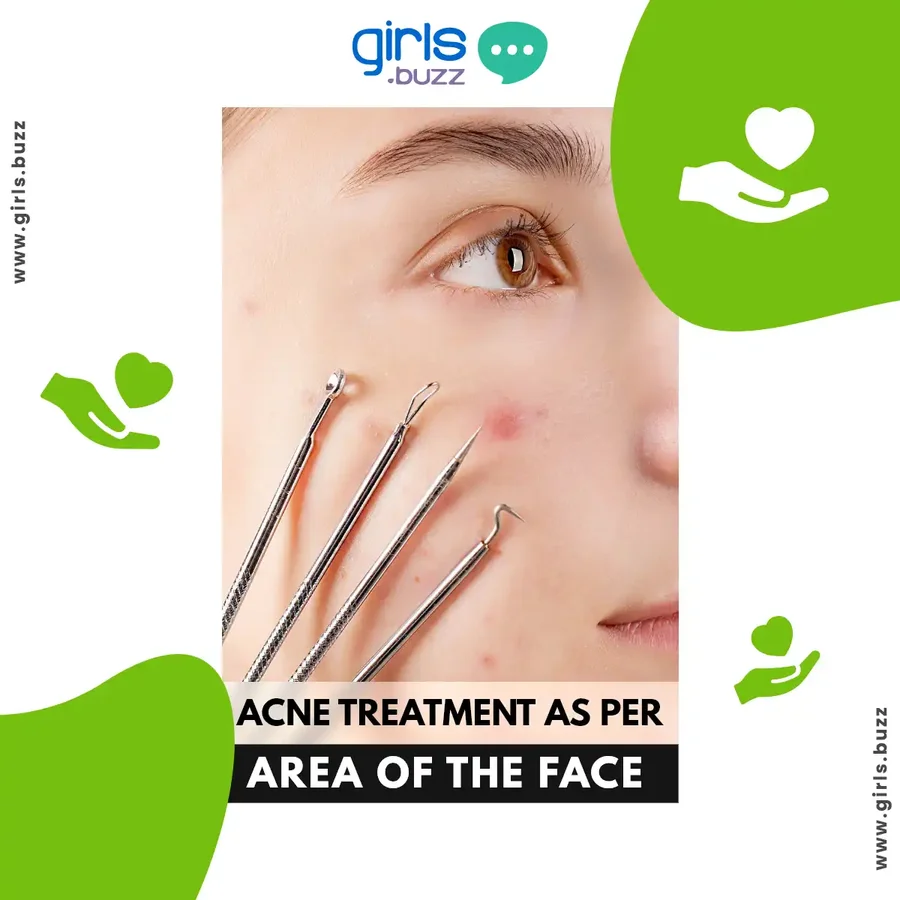Acne treatment as per area of the face
4 minuteRead

By Samyati Mohanty
The most common areas of the body where acne appears on the skin are the face, forehead, chest, shoulders, and upper back. Genetics, fluctuating hormone levels, stress, high humidity, and the use of greasy or oily personal care products are a few of the factors. Teenagers are frequently affected by acne, but it can affect anyone.
Where does acne most frequently manifest?
The face, forehead, chest, shoulders, and upper back are the areas where acne is most likely to appear. Your body is covered in oil glands, but those are the areas with the most of them. Depending on how severe it is, acne treatment options vary. Acne can range in severity from minor (a few sporadic pimples) to moderate (inflammatory papules) (nodules and cysts).
What variations of acne are there?
There are various varieties of acne. They consist of:
- Blackheads are open skin lumps that collect extra oil and dead skin. The black patches, which mimic dirt deposits, are actually generated by an uneven light reflection off the obstructed follicle.
- Whiteheads: Bumpy areas that are kept closed by skin debris and oil.
- Papules: Tiny pimples that are red or pink and swell up.
- Pustules are pus-filled pimples. They have the appearance of red rings encircling whiteheads. If they are picked or scratched, they may leave scars.
- Pityrosporum folliculitis, often known as fungal acne, is brought on by an overgrowth of yeast in the hair follicles. They could become swollen and itching.
- Nodules: Firm zits buried deep beneath the skin. They hurt and are big.
- Cysts: Acne that is pus-filled. These might leave scars.
Don't let your self-esteem may be impacted by any of these acne types. It is advisable to consult your healthcare professional as soon as possible so that they can assist you choose the appropriate treatment option(s).
What brings on acne?
One of the main hormonal causes of acne is androgen hormones, which often start to become active around adolescence and early adulthood. Sensitivity to these hormones, in addition to bacteria on the skin's surface and fatty acids found in oil glands, can cause acne.
Several factors might cause acne or exacerbate it:
- hormone levels that fluctuate according to a woman's monthly cycle.
- plucking at a scar from acne.
- apparel as well as wearables like caps and sports helmets.
- air pollution and particular weather circumstances, especially high humidity.
- working in a setting where you regularly come into contact with grease or utilising fatty or oily personal care items, such as thick creams, lotions, or waxes (such as working at a restaurant where there are greasy food surfaces and frying oil).
- Cortisol levels rising due to stress can exacerbate acne.
- a few medications.
- Genetics.
Acne locations and their causes
1. Temples and hairline
The usage of specific hair products may be the cause of forehead acne, which develops around the hairline and temples. Pomade acne is the term used when this occurs. Any skin type, including boys and females, might be impacted by this.
Oily or waxy hair products have the potential to clog pores when they contact the adjacent skin on the face. It can lead to acne outbreaks. Certain cosmetic components, notably those included in hair smoothing products, have been linked to acne.
It could be possible to stop acne from developing at the hairline by using simpler formulas or avoiding certain components in hair care products. Preventing oily hair products from coming into contact with the face is especially crucial.
2. T-zone: chin, nose, and forehead
Sebum, an oily material that the sebaceous glands create, nourishes and shields the skin. Acne may result from overproduction of sebum. These areas of the face may have breakouts more frequently than other places due to increased oil production. The U-zone, which includes the cheeks and chin, was more commonly affected by acne in younger persons than the T-zone.
3. Cheeks
Acne mechanica, which manifests as breakouts on the cheeks, is brought on by friction or rubbing of the skin. For instance, this might happen if someone clutches a cell phone against their face, moves against their pillow while they sleep, or is wearing gear or clothing with a chin strap.
However, acne mechanica is not just found on the cheeks. Depending on the particular occlusive clothes or activity, it may happen in various body parts. Athletes are the ones who exhibit it most frequently. Acne typically gets better when the source of friction against the skin is addressed.
4. Jawline
Scientists frequently connect hormonal changes to the jawline acne. Other scholars, however, have disputed and debunked this idea. There is no proof that acne on the chin and jawline may effectively identify a person's hormonal imbalance.
The adrenal glands create a hormone called DHEA-S in both males and females. Levels of this hormone were somewhat to moderately higher in females with adult acne. According to research, between 39 and 85 percent of females with acne experience worse acne in the days leading up to their periods.
However, since many acne sufferers do not have hormone problems, there may be additional causes, such as enhanced hormone sensitivity of the oil glands.
Instead, scientific research indicates that acne in specific facial regions may be brought on by germs, excessive oil production, hormonal changes, or external factors like the usage of waxy hair products.
Acne may be cleared up by addressing these problems by lifestyle adjustments, appropriate skin care habits, and topical acne treatments.
People can visit their doctor or dermatologist for therapy if these approaches are ineffective, they have severe or persistent acne, or if their acne is long-lasting.
Write, Record and Answer! Consume Unlimited Content! All you need to do is sign in and its absolutely free!
Continue with one click!!By signing up, you agree to our Terms and Conditions and Privacy Policy.










